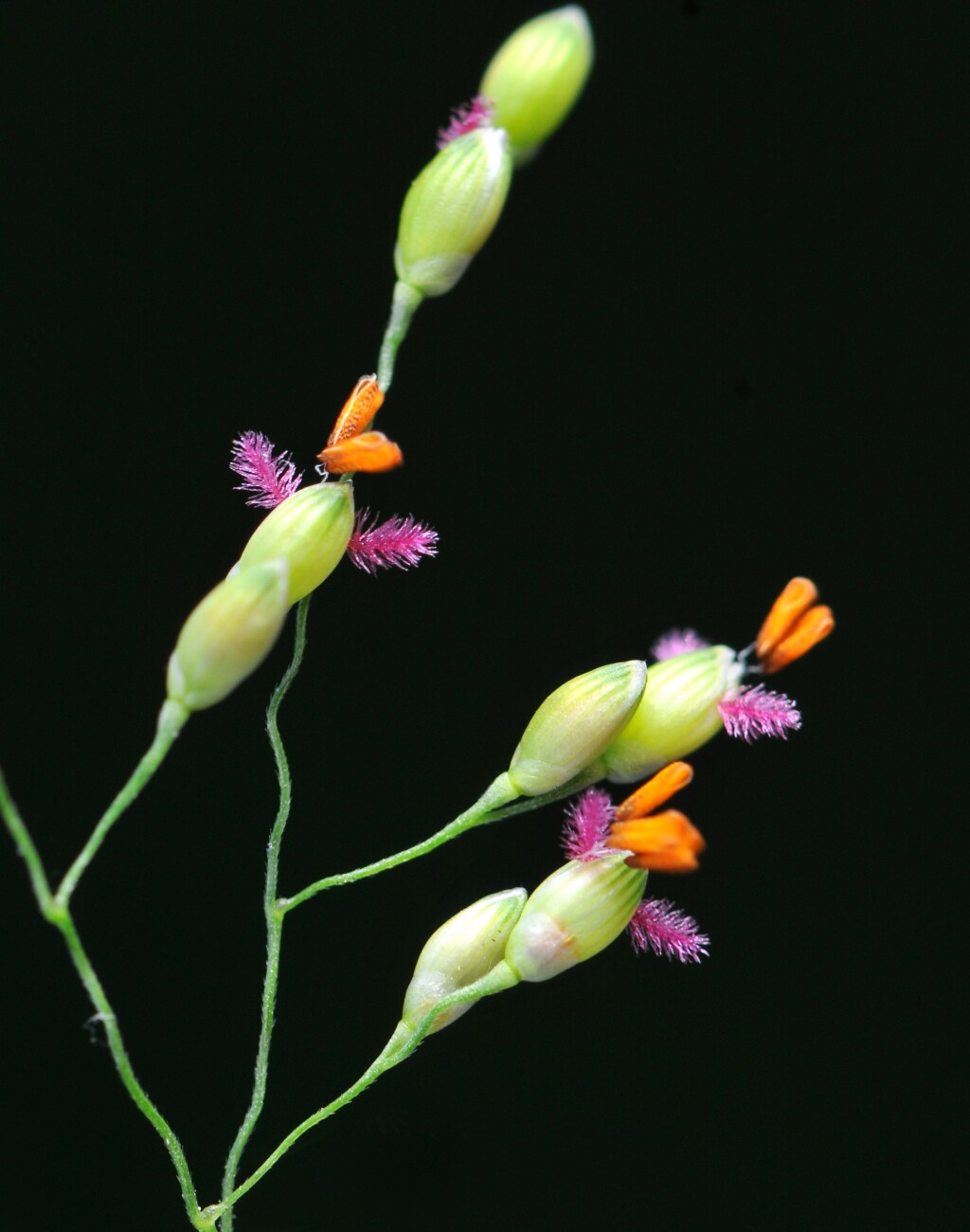Panicum schinzii
Hack.Tufted annual. Culms ascending to erect, to 110 cm high; nodes glabrous, usually prominent and yellowish. Leaves glabrous, or often shortly hirsute near the blade-sheath junction; sheath usually purplish; blade flat, to 25 cm long, 4–15 mm wide; ligule 1–3 mm long, long-ciliate. Panicle 15–30 cm long, its base often remaining enclosed in upper sheath, primary branches spreading but usually remaining inclined to the main axis, secondary branches similarly spreading. Spikelets 2.3–3 mm long; lower glume apparently nerveless or weakly 1-nerved, very broadly obtuse or truncate, 0.7–1.2 mm long; rachilla not apparent between glumes; upper glume 9–11-nerved, obtuse, as long as the spikelet; lower floret staminate, stamens usually 3; lemma of lower floret equal to upper glume; palea of lower floret subequal to its lemma; fertile lemma obtuse, slightly shorter than spikelet, hard, shining, dorsally rounded; palea subequal to lemma, flat or slightly convex. Feb.-Mar. (3 records)
Gold, HSF. Also WA, SA, NSW. Native to southern Africa. Known from several collections, from central Victoria (near Harcourt) with scattered plants growing along a roadside drain.
Distinctive in its robust habit, large inflorescence and the staminate lower florets. While the key character distinguishing this species from Panicum gilvum refers only to the staminate lower florets, in general P. schinzii is a larger more upright plant with a fully exserted panicle at maturity, shorter blunter spikelets, and a shorter lower glume that is truncate to shortly pointed.
 Spinning
Spinning



